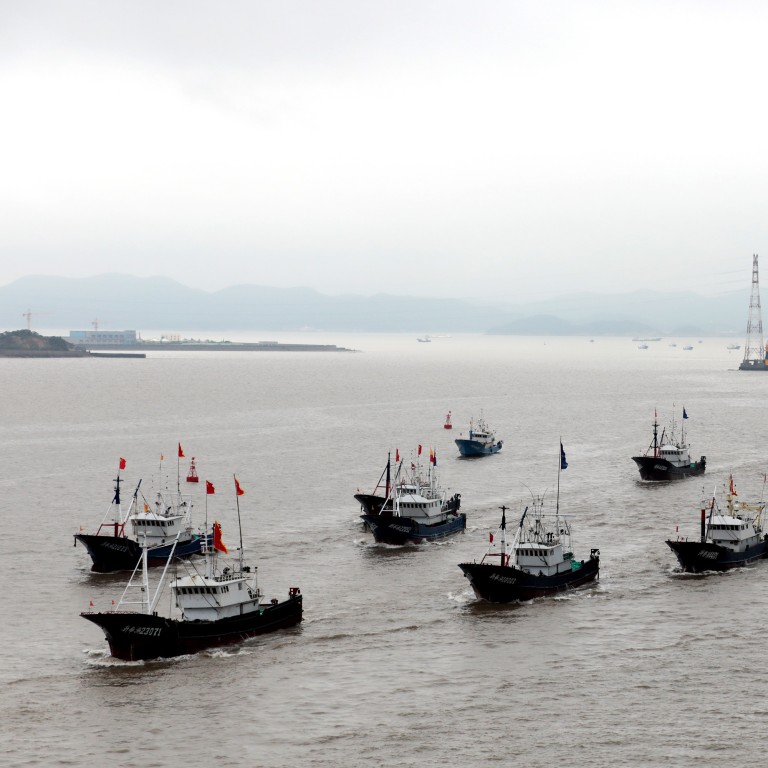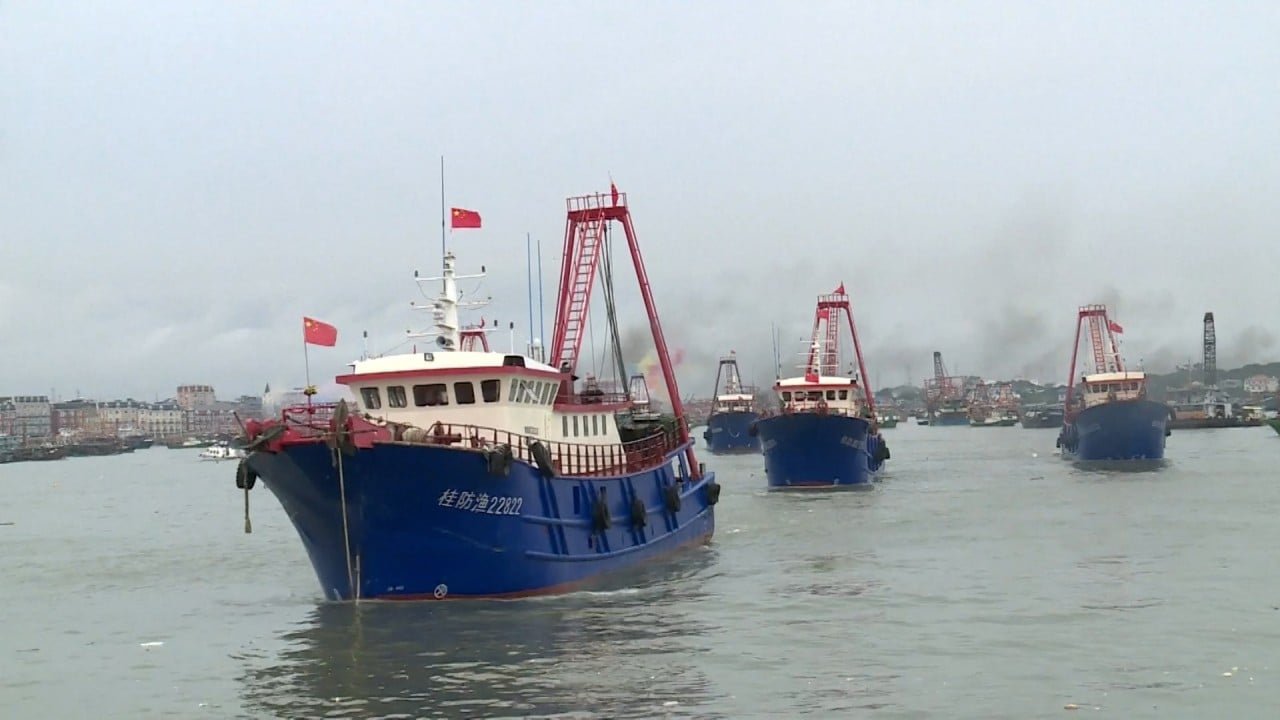
Quad team up to track ‘dark shipping’ and illegal fishing in the Indo-Pacific
- Security pact members to pool data to monitor activity in their waters
- China says it has always met its international obligations and warns others not to make unfounded accusations
The White House said on Tuesday that the Indo-Pacific Partnership for Maritime Domain Awareness aimed to build “a faster, wider, and more accurate maritime picture of near-real-time activities in partners’ waters”.
Over the next five years, the Quad members – the United States, Japan, Australia and India – will share unclassified data gathered by a combination of Automatic Identification System signals from ships and radio-frequency technologies.
“This initiative will transform the ability of partners in the Pacific Islands, Southeast Asia and the Indian Ocean region to fully monitor the waters on their shores and, in turn, to uphold a free and open Indo Pacific,” the White House said.
The system will connect existing surveillance centres, including two in India and Singapore, as well as the Pacific Islands Forum Fisheries Agency in the Solomon Islands and the Pacific Fusion Centre in Vanuatu. The latter two are backed by Australia.
US plans to battle illegal fishing in Pacific, with an eye on China’s fleet
The partnership was announced as leaders of the Quad security grouping met for their second in-person summit in Tokyo, where they also pledged to further cooperate on areas ranging from coronavirus vaccines to infrastructure, climate change and cybersecurity.
Dark ships are vessels that turn off their AIS transponders to hide their location and identities, usually to conceal activities such as illegal fishing or unauthorised entry into another country’s waters.
China’s fishing fleet, which includes privately owned vessels and commercial trawlers from state-owned companies, has been travelling further afield, seeking new fishing grounds in Southeast Asia, West Africa, South America and in the South Pacific as result of depleted fish stocks in Chinese waters.
But Chinese fleets have often been accused of defying international law to carry out illegal, unreported and unregulated fishing, using prohibited equipment, capturing protected species such as turtles and seals and abusing migrant crews, according to a recent report by the Environmental Justice Foundation.
In Beijing, Chinese foreign ministry spokesman Wang Wenbin said China had “always actively fulfilled its international obligations”.
“We ask the countries concerned to refrain from wearing tinted glasses and making unfounded accusations,” he said. “Engaging in ‘small circles’ and stirring up rival camps is the real threat to building a peaceful, stable and cooperative maritime order.”
“This is a part of the US strategy against China, which also meets the needs of the littoral countries in the South China Sea and will strengthen the maritime collaboration capability against China while weakening China’s strength in the waters.”
Chen Xiangmiao, an associate research fellow at the National Institute for South China Sea Studies, said the initiative would not just deal a blow to China’s fishing boats but also pave the way for further information-sharing among the four countries to counter China’s influence.
“It’s not common for countries to share such information among their law enforcement agencies,” Chen said. “That means, they could share not just information about fishing boats but also naval ships and coastguard vessels.”
Chen said the initiative would also be part of the US strategy to integrate its maritime forces, including the US Coast Guard, to counter China’s growing presence in the South China Sea and the South Pacific.
During a summit with members of the Association of Southeast Asian Nations earlier this month, Biden announced the future deployment of a US Coast Guard vessel to the region to help bolster its maritime security.
But while the Chinese and US navies are regulated by a non-binding code to manage their encounters and prevent tensions escalating, no such measures are in place for their respective coastguards.
Chen said that because coastguard vessels were often armed “any potential confrontations of coastguard vessels would be no less than between warships”.
“Will the US coastguard vessels resort to force if the Chinese fishing boats refuse to comply? And what would the US Coast Guard do when facing Chinese fishing boats and the Chinese coastguard?” Chen said.
“While there are many questions to be answered, one thing sure to raise concerns is that the encounters of coastguards will potentially intensify tensions in the region.”



